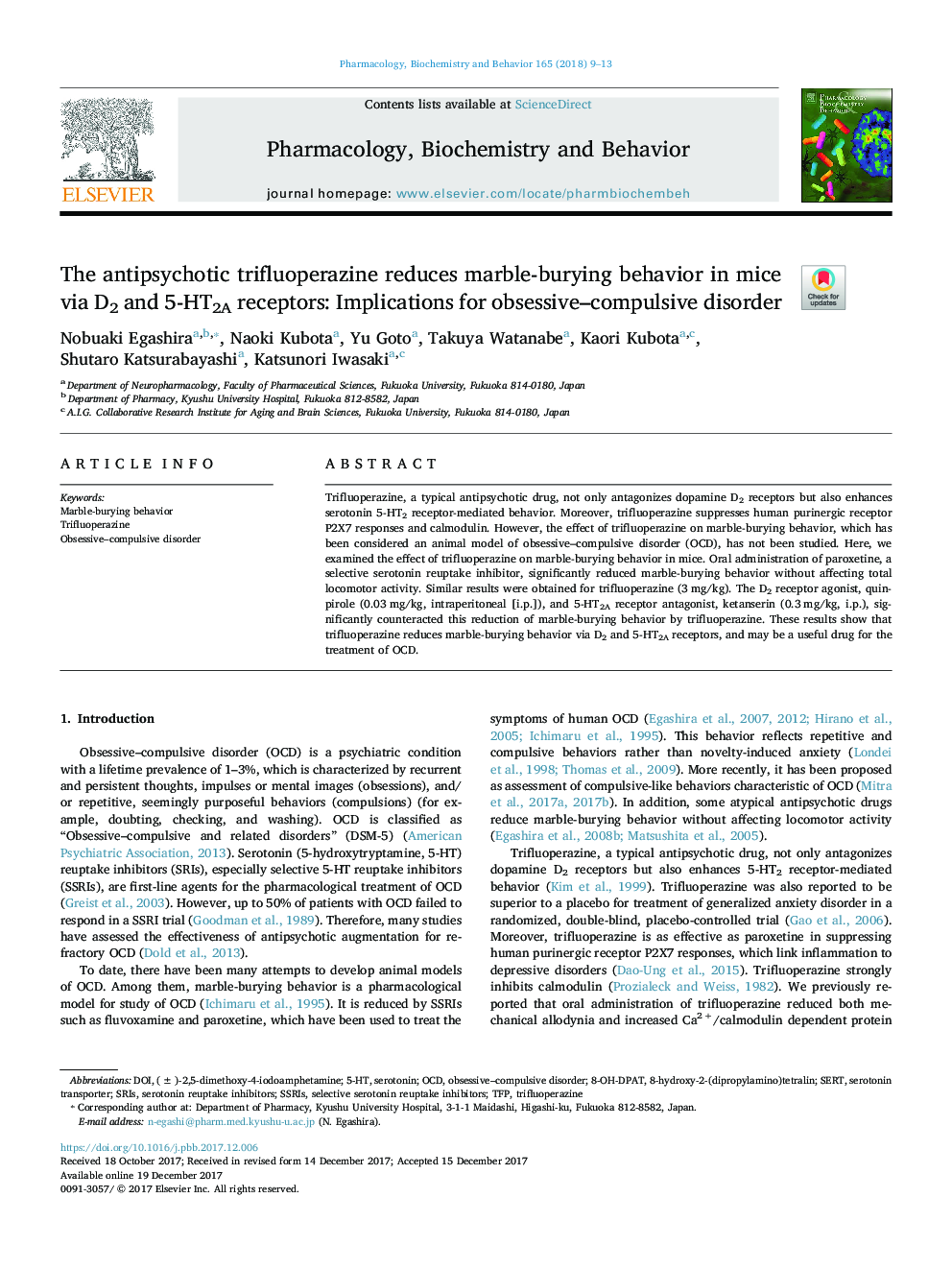| کد مقاله | کد نشریه | سال انتشار | مقاله انگلیسی | نسخه تمام متن |
|---|---|---|---|---|
| 8350026 | 1541822 | 2018 | 5 صفحه PDF | دانلود رایگان |
عنوان انگلیسی مقاله ISI
The antipsychotic trifluoperazine reduces marble-burying behavior in mice via D2 and 5-HT2A receptors: Implications for obsessive-compulsive disorder
دانلود مقاله + سفارش ترجمه
دانلود مقاله ISI انگلیسی
رایگان برای ایرانیان
کلمات کلیدی
موضوعات مرتبط
علوم زیستی و بیوفناوری
بیوشیمی، ژنتیک و زیست شناسی مولکولی
زیست شیمی
پیش نمایش صفحه اول مقاله

چکیده انگلیسی
Trifluoperazine, a typical antipsychotic drug, not only antagonizes dopamine D2 receptors but also enhances serotonin 5-HT2 receptor-mediated behavior. Moreover, trifluoperazine suppresses human purinergic receptor P2X7 responses and calmodulin. However, the effect of trifluoperazine on marble-burying behavior, which has been considered an animal model of obsessive-compulsive disorder (OCD), has not been studied. Here, we examined the effect of trifluoperazine on marble-burying behavior in mice. Oral administration of paroxetine, a selective serotonin reuptake inhibitor, significantly reduced marble-burying behavior without affecting total locomotor activity. Similar results were obtained for trifluoperazine (3Â mg/kg). The D2 receptor agonist, quinpirole (0.03Â mg/kg, intraperitoneal [i.p.]), and 5-HT2A receptor antagonist, ketanserin (0.3Â mg/kg, i.p.), significantly counteracted this reduction of marble-burying behavior by trifluoperazine. These results show that trifluoperazine reduces marble-burying behavior via D2 and 5-HT2A receptors, and may be a useful drug for the treatment of OCD.
ناشر
Database: Elsevier - ScienceDirect (ساینس دایرکت)
Journal: Pharmacology Biochemistry and Behavior - Volume 165, February 2018, Pages 9-13
Journal: Pharmacology Biochemistry and Behavior - Volume 165, February 2018, Pages 9-13
نویسندگان
Nobuaki Egashira, Naoki Kubota, Yu Goto, Takuya Watanabe, Kaori Kubota, Shutaro Katsurabayashi, Katsunori Iwasaki,